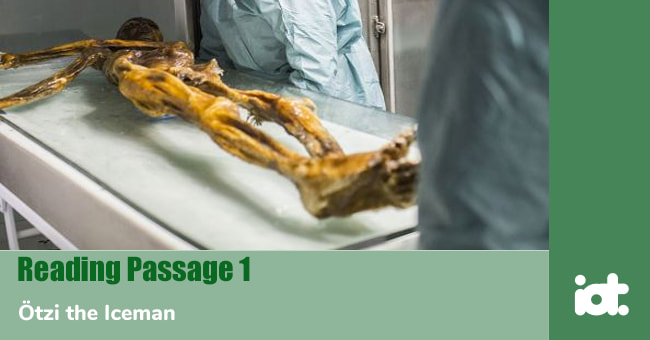
Master IELTS General Training Volume 6
- Đăng ngày: 06 Nov 2019
- Tests taken: 312,073
Đáp án
Part 1: Question 1 - 14
- 1 recently deceased
- 2 pollen
- 3 hair analysis
- 4 pollen
- 5 3 / three times
- 6 pain relief
- 7 chief
- 8 A waterproof coat
- 9 family business
- 10 20 / twenty
- 11 industrial revolution
- 12 waste product
- 13 textiles
- 14 k
- 1 recently deceased
- 2 pollen
- 3 hair analysis
- 4 pollen
- 5 3 / three times
- 6 pain relief
- 7 chief
- 8 A waterproof coat
- 9 family business
- 10 20 / twenty
- 11 industrial revolution
- 12 waste product
- 13 textiles
- 14 k
Part 2: Question 15 - 27
- 15 C
- 16 B
- 17 A
- 18 B
- 19 A
- 20 C
- 21 FALSE
- 22 TRUE
- 23 TRUE
- 24 FALSE
- 25 FALSE
- 26 NOT GIVEN
- 27 FALSE
- 15 C
- 16 B
- 17 A
- 18 B
- 19 A
- 20 C
- 21 FALSE
- 22 TRUE
- 23 TRUE
- 24 FALSE
- 25 FALSE
- 26 NOT GIVEN
- 27 FALSE
Part 3: Question 28 - 40
- 28 B
- 29 A
- 30 D
- 31 C
- 32 Arabica
- 33 Robusta
- 34 caffeine
- 35 1.7-4%
- 36 ghee / clarified butter
- 37 learned imam
- 38 a few
- 39 peaberry
- 40 ditch water
- 28 B
- 29 A
- 30 D
- 31 C
- 32 Arabica
- 33 Robusta
- 34 caffeine
- 35 1.7-4%
- 36 ghee / clarified butter
- 37 learned imam
- 38 a few
- 39 peaberry
- 40 ditch water
Leaderboard:
| # | Thành viên | Điểm | Thời gian | |
|---|---|---|---|---|
| Manchester Lab Computer 2 |  | 9.0 | 15:48 | |
| sarita kumari |  | 9.0 | 16:01 | |
| Victoria Nwokoma |  | 9.0 | 16:51 | |
| 4 | Tchouante Vanelle |  | 9.0 | 17:52 |
| 5 | Thi Huong Giang Tran |  | 9.0 | 17:58 |
| 6 | KADEK DITHA OKTAVIANI LESTARI - |  | 9.0 | 18:25 |
| 7 | NGUYEN KHAC GIAC |  | 9.0 | 21:05 |
| 8 | Manoo Malik |  | 9.0 | 24:26 |
| 9 | Makuigne Gladys |  | 9.0 | 25:02 |
| 10 | Umair Bhatti |  | 9.0 | 25:24 |
Giải thích chi tiết
Questions 1-7
Complete the summary below.
Choose NO MORE THAN TWO WORDS AND/OR A NUMBER from the passage for each answer.
Write your answers in boxes 1-7 on your answer sheet.
Originally thought to be a climber that had 1 not long ago, Ötzi was then found to be an ancient mummy that had lived over 5,000 years ago. Scientists determined the location he had lived in because his body had a certain type of 2 on it. Through 3 we now know that he regularly ate a mixture of different foods including wheat bread and root vegetables. The season he died in was also worked out by the presence of 4 . Ötzi was not in the best of health and had in fact been ill 5 not so long ago as shown by marks on his nails. Different tattoos on his body might have been used for 6 . He was a well dressed man with the type of clothes that suggested he was a tribal 7 |
- 1 Answer: recently deceased
- 2 Answer: pollen
- 3 Answer: hair analysis
- 4 Answer: pollen
- 5 Answer: 3 / three times
- 6 Answer: pain relief
- 7 Answer: chief
Questions 8-14
Complete the sentences below.
Choose NO MORE THAN THREE WORDS AND/OR A NUMBER from the passage for each answer.
Write your answers in boxes 8-14 on your answer sheet.
8 was impossible to buy more than 200 years ago.
Macintosh went to university instead of working for the 9
By the time he was 10 he had started his own company.
Macintosh played a big part in the 11 that was happening at the time.
Coal tar naptha was a 12 from the coal gas industry.
After some research Macintosh was able to make 13 waterproof.
The raincoat was finally ready when he added a 14
- 8 Answer: A waterproof coat
- 9 Answer: family business
- 10 Answer: 20 / twenty
- 11 Answer: industrial revolution
- 12 Answer: waste product
- 13 Answer: textiles
- 14 Answer: k
READING PASSAGE 1

Ötzi the Iceman
Read the text below and answer Questions 1–7
Found in 1991 in the Ötztal Alps this well preserved mummy of a man has been affectionately nicknamed Ötzi the Iceman. He is Europe’s oldest natural human mummy and has been estimated to have lived around 3,300 BC. When first found people thought this was the body of a recently deceased climber. It was only when Ötzi was taken to the University of Innsbruck that it was fairly quickly determined that this was an ancient mummy. It was finally determined that Ötzi was about 45 years old when he died, weighed 50kg, and was 1.65 metres tall. It was even possible to tell which village he had lived in by the type of pollen and dust grains found on his body. His diet from several months before he died was determined by hair analysis and shown to be a mixture of different meats, wheat bread, root vegetables, fruits, and other grains. Ötzi’s death most likely happened in the spring because of the presence of very fresh pollen that is only seen at this time of year. High levels of copper and arsenic were also found in his hair suggesting that he might have been involved in making bronze (a mixture of copper, arsenic and/or tin). The copper axe found by his side was probably made by him. Lines on one of the two fingernails found indicate that he had been ill three times in the last six months. He wore a cloak made of woven grass and a coat, a belt, a pair of leggings, a loincloth, and shoes, all made of leather of different skins. This was seen as very sophisticated for the time and suggests that Ötzi was a chief of his tribe. The shoes were waterproof and designed for walking across the snow. They were constructed using bearskin for the soles, deer hide for the top panels, and a netting made of tree bark. |
Read the text below and answer Questions 8 -14.
It is difficult to imagine in today’s world of high technology but in the 19th century it was impossible to find a waterproof coat. Whenever it rained you were sure to get wet from head to toe. This was all to change with a little help from Charles Macintosh a Scottish chemist and inventor. Born in 1766, he was expected to spend his life working for his father in the family business dyeing wool and silk. Charles had other ideas, after leaving school, he studied chemistry at a university in Glasgow and after graduating was employed as a clerk with a merchant. This was only a stepping-stone as Charles never gave up his love of science, particularly chemistry, and spent all of his free time studying. By the time he was twenty Charles had given up his job and had opened up his own company manufacturing various chemicals including ammonium chloride and Prussian blue dye. This became a successful business for Charles but he was not the kind of man just to focus on one thing. He was constantly looking for better ways, and easier ways to do things and with the help of James Beaumont Nelson he developed a process to make high quality cast iron. This was an essential part of the industrial revolution that was happening in Britain at the time and was used to make machines, tools, bridges and ships. After the death of his father, Charles inherited the family business and began to look for ways to invest his money. Around the same time, in 1817, the Glasgow Gas Light Company was established and Charles became interested in finding a use for the waste products from the coal gas industry. One of these was the waste product known as coal tar naptha. With a touch of genius that perhaps no one else at the time could have thought of Charles combined his knowledge of dyeing material with his love of chemistry. The result was a liquid rubber that when combined with other textiles made them waterproof. The rainproof cloth was quickly adopted by the British army and navy. It was sold to the public as the world’s first raincoat – the Mackintosh. Note the added ‘k’ to Charles’s name. |






